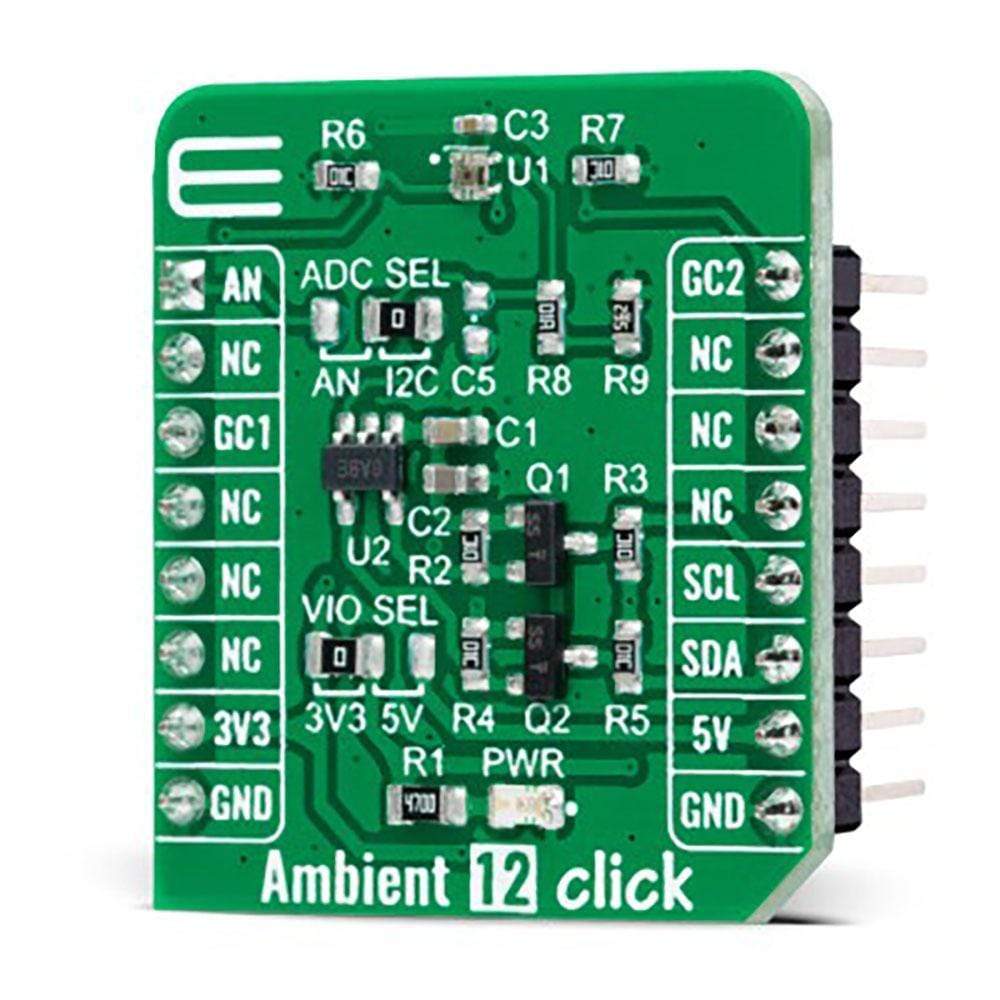
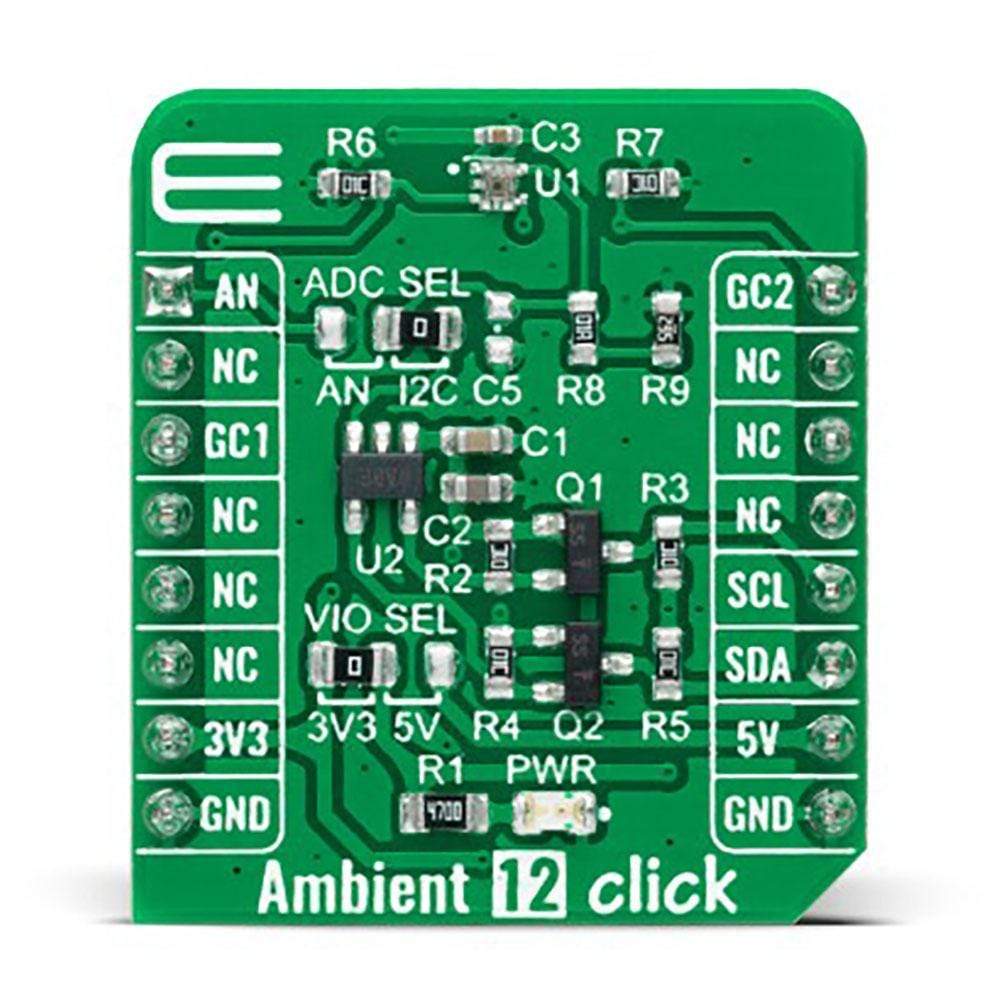
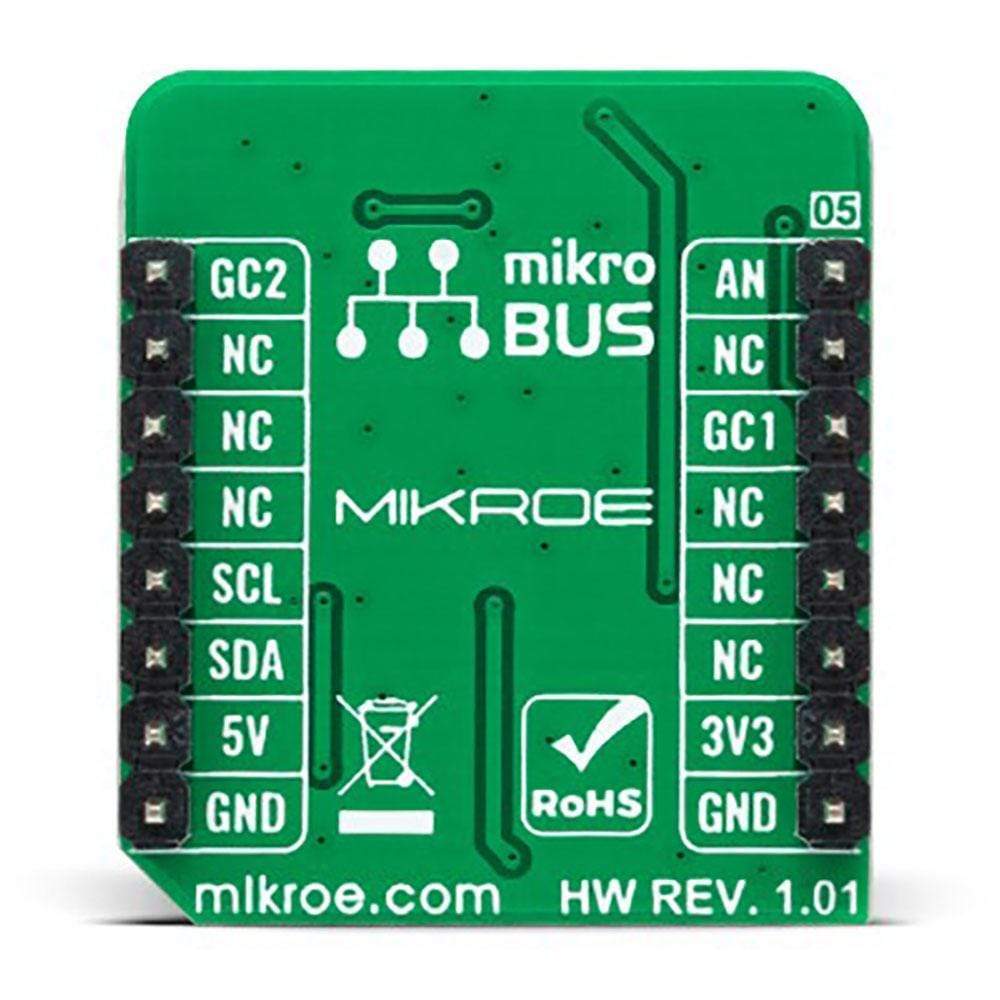
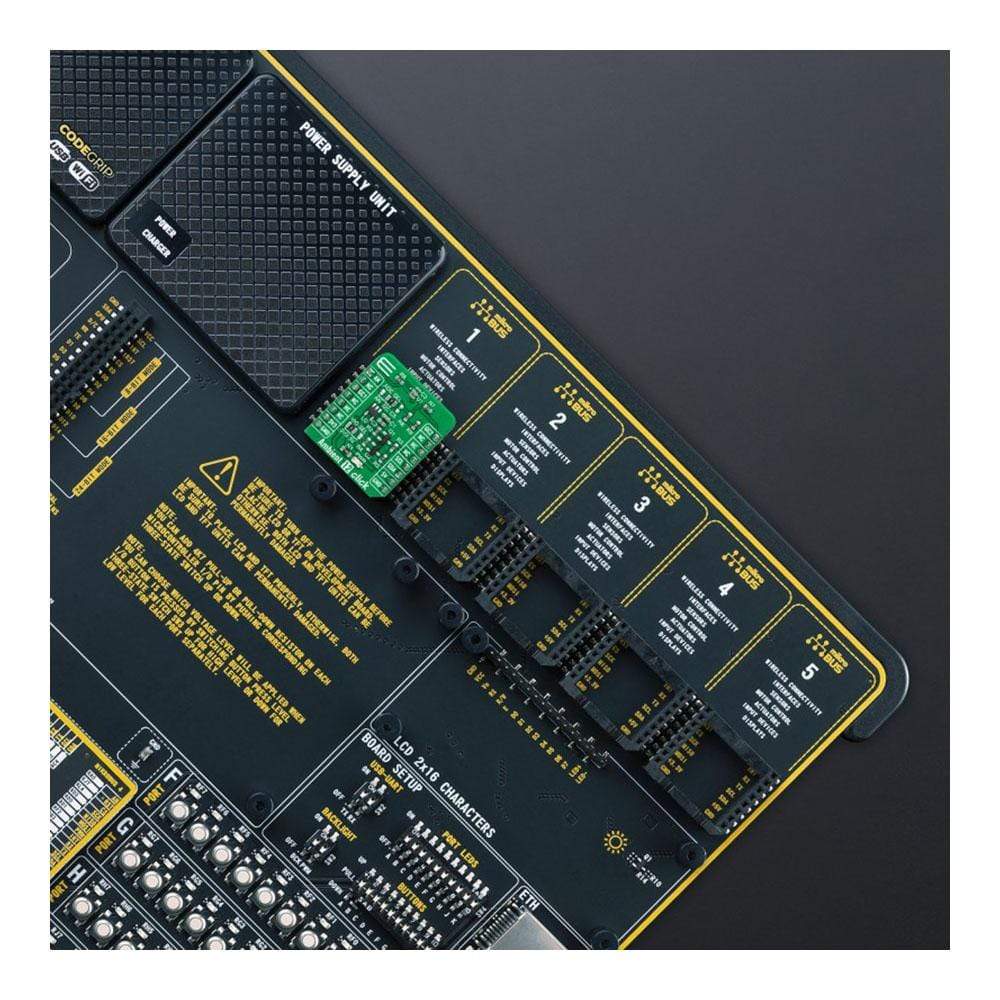
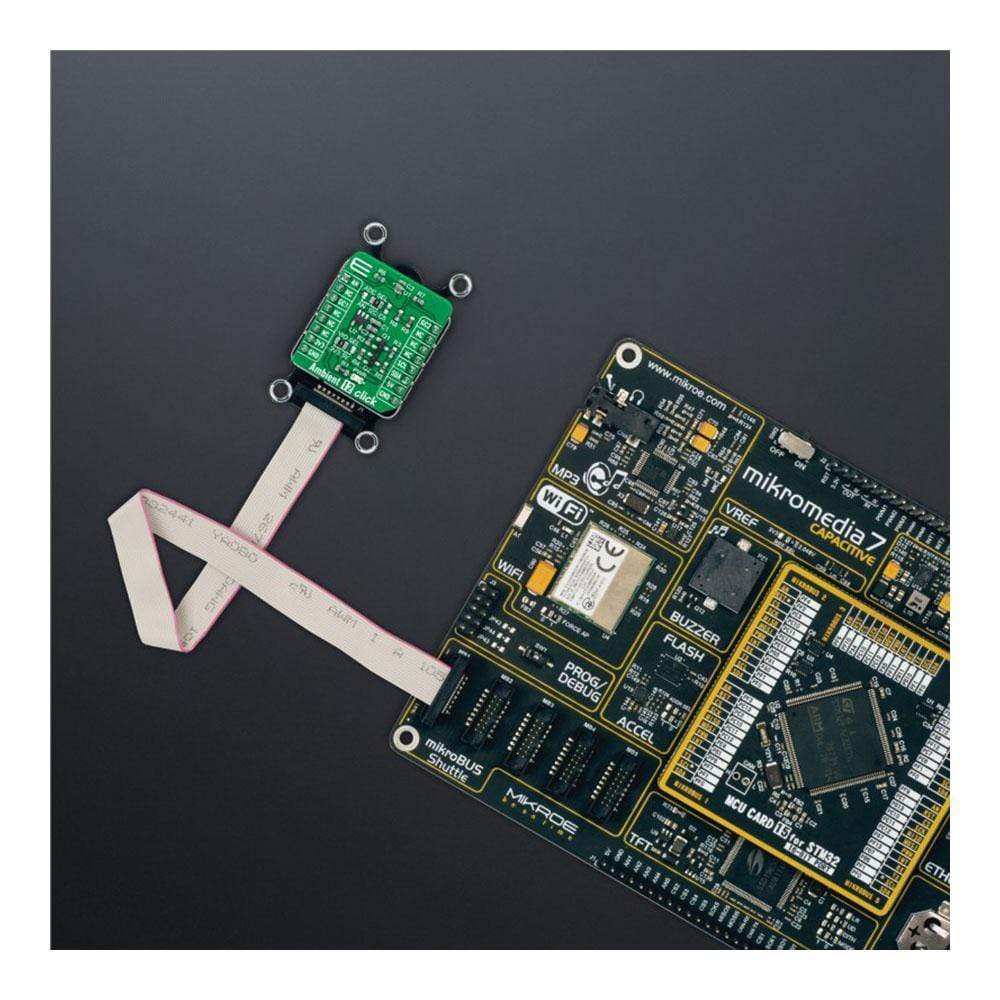
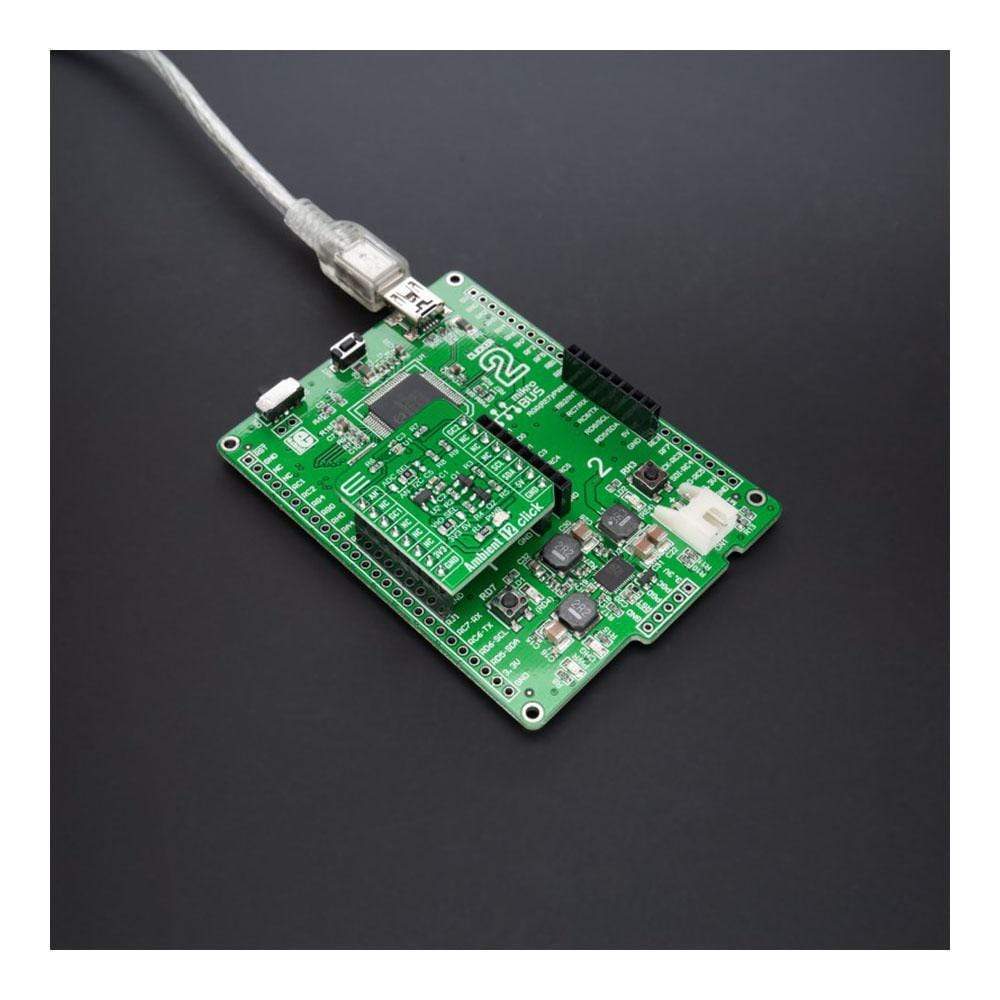
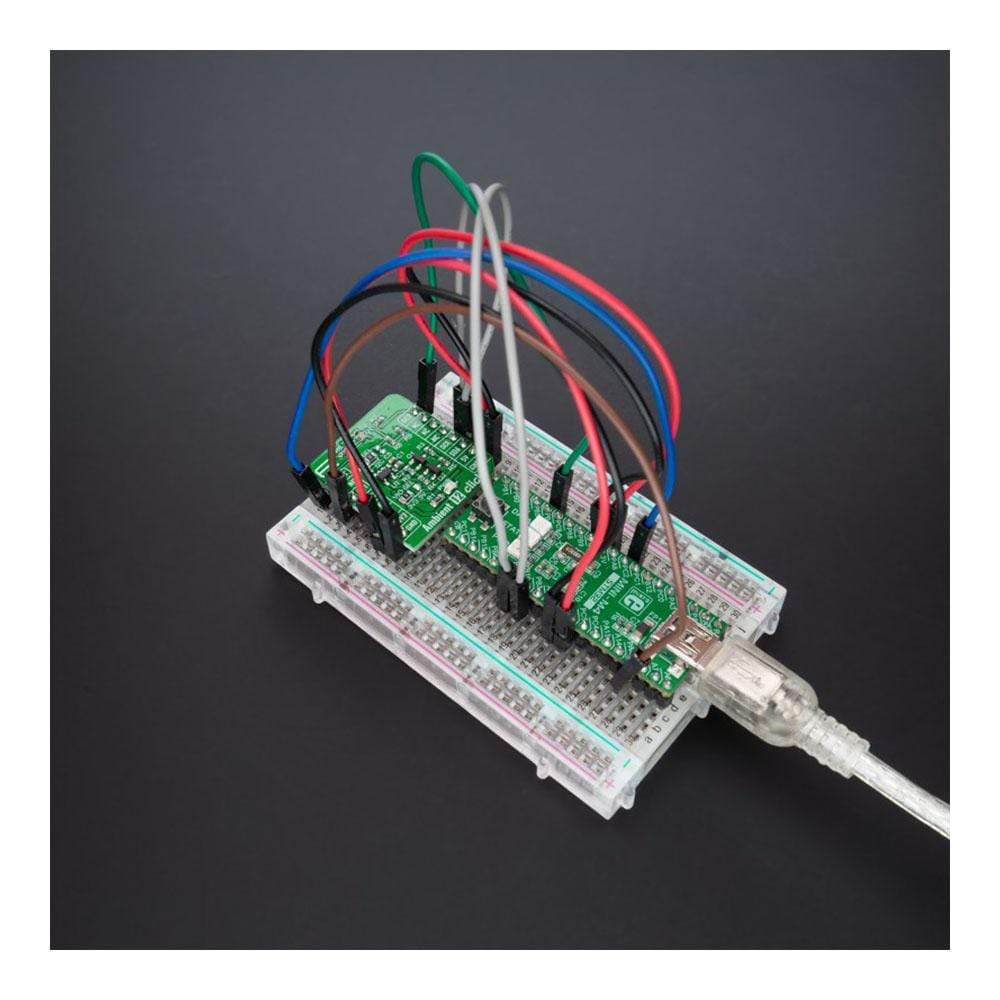
Overview
The Ambient 12 Click Board™ is a compact add-on board used to sense the amount of the present ambient light. This board features the BH1620FVC, an analogue current-output type ambient light sensor from Rohm Semiconductor. It is characterized by spectral sensitivity close to human eyes sensitivity and outputs current in proportion to brightness. It also has four configurable modes of operation, shutdown mode in association with three gain modes, and low sensitivity variations of +/-15%. This Click Board™ is the most suitable for obtaining ambient light data for adjusting brightness in applications that require power saving and better visibility.
The Ambient 12 Click Board™ is supported by a mikroSDK compliant library, which includes functions that simplify software development. This Click Board™ comes as a fully tested product, ready to be used on a system equipped with the mikroBUS™ socket.
Downloads
How Does The Ambient 12 Click Board™ Work?
The Ambient 12 Click Board™ is based on the BH1620FVC, an analog current-output type ambient light sensor from Rohm Semiconductor. The BH1620FVC is composed of photodiodes, amplifiers, and current mirror circuits, where the output current, in proportion to brightness, is converted to the voltage value by an external resistor. It is characterized by spectral sensitivity close to human eyes sensitivity with low sensitivity variations of +/-15%.
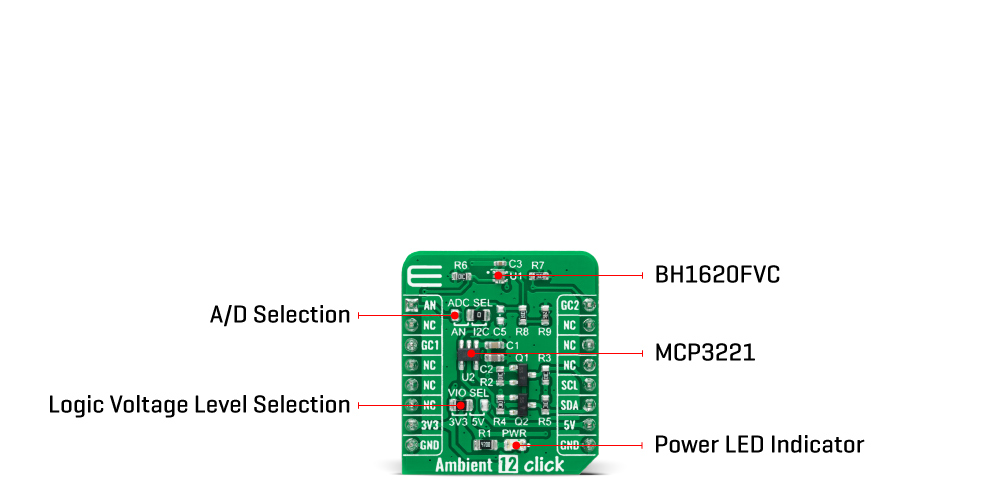
It also has four configurable modes of operation, shutdown mode associated with three gain modes: high-gain mode with an illuminance detection range of 1000lx, medium-gain mode up to 10.000lx, and low-gain mode up to 100.000lx. The desire gain mode is selected through CS and PWM pins of the mikroBUS™ socket labelled as GC1 and GC2.
The output voltage of the BH1620FVC can be converted to a digital value using MCP3221, a successive approximation A/D converter with a 12-bit resolution from Microchip, using a 2-wire I2C compatible interface, or can be sent directly to an analog pin of the mikroBUS™ socket labelled as AN. Selection can be performed by onboard SMD jumper labelled as A/D SEL to an appropriate position marked as AN and ADC.
The Ambient 12 Click Board™ can operate with both 3.3V and 5V logic voltage levels selected via the VIO SEL jumper. This way, it is allowed for both 3.3V and 5V capable MCUs to use the communication lines properly. However, the Click board™ comes equipped with a library containing easy-to-use functions and an example code that can be used, as a reference, for further development.
SPECIFICATIONS
| Type | Optical |
| Applications | The Ambient 12 Click Board™ can be used for obtaining ambient light data for adjusting brightness in applications that require power saving and better visibility |
| On-board modules | BH1620FVC - analog current-output type ambient light sensor from Rohm Semiconductor |
| Key Features | Low power consumption, spectral sensitivity close to human eyes sensitivity, output current in proportion to brightness, built-in shutdown function, configurable gain mode, low sensitivity variation, and more |
| Interface | Analog,I2C |
| Compatibility | mikroBUS |
| Click board size | S (28.6 x 25.4 mm) |
| Input Voltage | 3.3V or 5V |
PINOUT DIAGRAM
This table shows how the pinout of the Ambient 12 Click Board™ corresponds to the pinout on the mikroBUS™ socket (the latter shown in the two middle columns).
| Notes | Pin |  |
Pin | Notes | |||
|---|---|---|---|---|---|---|---|
| Analog Signal | AN | 1 | AN | PWM | 16 | GC2 | Gain Control Signal 2 |
| NC | 2 | RST | INT | 15 | NC | ||
| Gain Control Signal 1 | GC1 | 3 | CS | RX | 14 | NC | |
| NC | 4 | SCK | TX | 13 | NC | ||
| NC | 5 | MISO | SCL | 12 | SCL | I2C Clock | |
| NC | 6 | MOSI | SDA | 11 | SDA | I2C Data | |
| Power Supply | 3.3V | 7 | 3.3V | 5V | 10 | 5V | Power Supply |
| Ground | GND | 8 | GND | GND | 9 | GND | Ground |
ONBOARD SETTINGS AND INDICATORS
| Label | Name | Default | Description |
|---|---|---|---|
| LD1 | PWR | - | Power LED Indicator |
| JP1 | VIO SEL | Left | Logic Level Voltage Selection 3V3/5V: Left position 3V3, Right position 5V |
| JP2 | ADC SEL | Right | Output Voltage A/D Selection AN/I2C: Left position AN, Right position I2C |
AMBIENT 12 CLICK ELECTRICAL SPECIFICATIONS
| Description | Min | Typ | Max | Unit |
|---|---|---|---|---|
| Supply Voltage | 3.3 | - | 5 | V |
| Maximum Output Current | - | - | 7.5 | mA |
| Peak Wavelength | - | 560 | - | nm |
| Operating Temperature Range | -40 | +25 | +85 | °C |
| General Information | |
|---|---|
Part Number (SKU) |
MIKROE-4781
|
Manufacturer |
|
| Physical and Mechanical | |
Weight |
0.02 kg
|
| Other | |
Country of Origin |
|
HS Code Customs Tariff code
|
|
EAN |
8606027383519
|
Warranty |
|
Frequently Asked Questions
Have a Question?
Be the first to ask a question about this.







